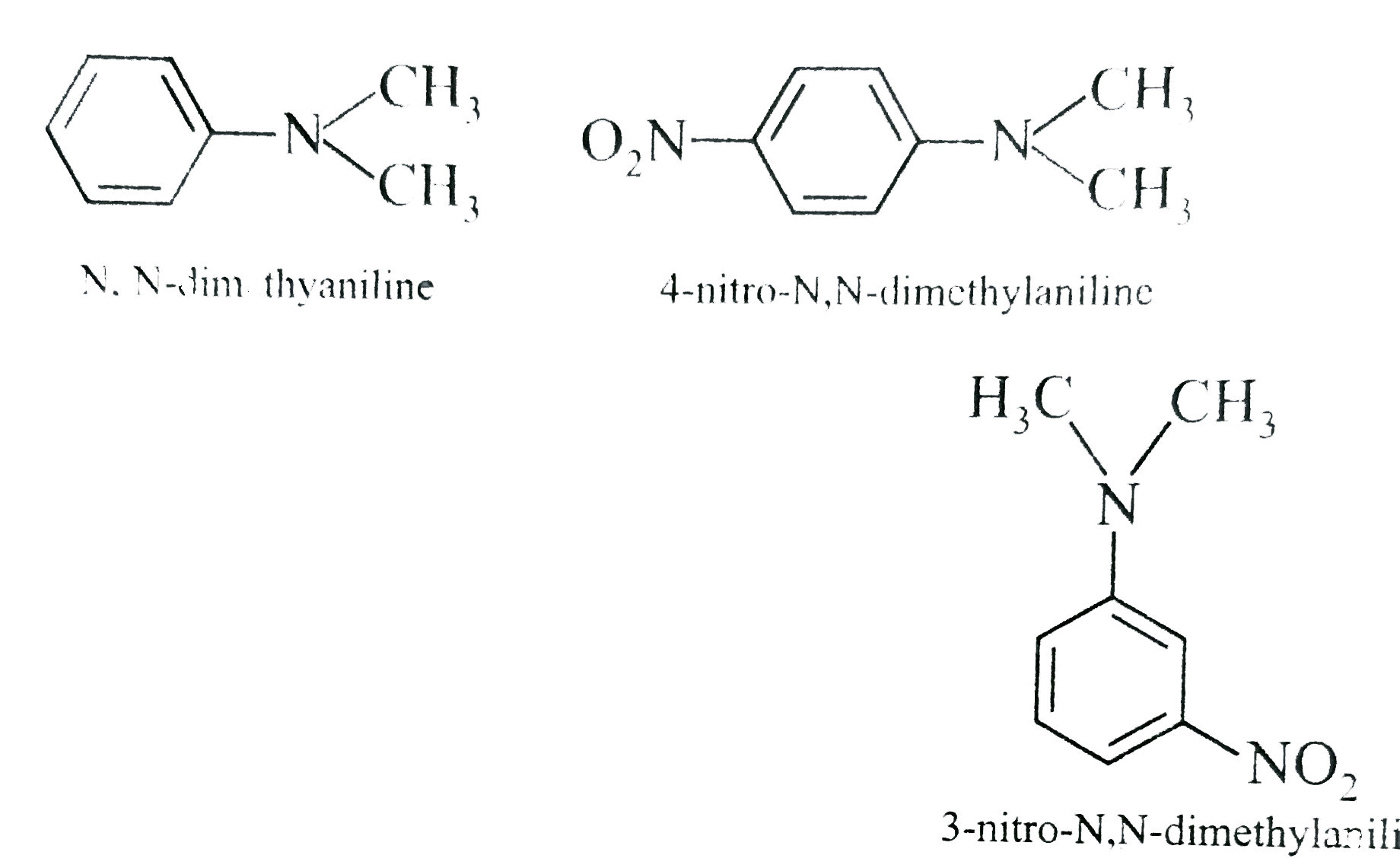The nitrosation of N, N-dimethylaniline takes place through the attack of electrophile
nitronium ion
protonated nitrous acid
nitrous acid
nitrosonium ion
The correct Answer is:D
To solve the question regarding the nitrosation of N,N-dimethylaniline and the electrophile responsible for the reaction, we can follow these steps:
Step 1: Understand the Structure of N,N-Dimethylaniline
N,N-dimethylaniline is an aromatic amine where two methyl groups are attached to the nitrogen atom of the aniline. The structure can be represented as:
- A benzene ring (C6H5) with an NH group (amine) where the nitrogen is bonded to two methyl groups (–N(CH3)2).
Step 2: Identify the Reaction Conditions
The nitrosation reaction typically involves the use of sodium nitrite (NaNO2) and a strong acid, such as hydrochloric acid (HCl). Under these conditions, nitrous acid (HNO2) is generated.
Step 3: Determine the Electrophile
In the nitrosation process, the electrophile that attacks the aromatic ring is crucial. The electrophiles that can be formed from nitrous acid include:
- Nitronium ion (NO2+)
- Protonated nitrous acid (HNO2+)
- Nitrous acid (HNO2)
- Nitrosonium ion (NO+)
Among these, the nitrosonium ion (NO+) is the most relevant electrophile for the nitrosation of aromatic amines.
Step 4: Mechanism of Electrophilic Attack
1. Formation of the Electrophile: When NaNO2 reacts with HCl, it generates nitrous acid, which can be protonated to form the nitrosonium ion (NO+).
2. Electrophilic Attack: The nitrosonium ion (NO+) is electron-deficient and can attack the electron-rich aromatic ring of N,N-dimethylaniline. The nitrogen atom of the amine group donates electron density to the ring, enhancing its reactivity towards electrophiles.
3. Formation of the Nitroso Derivative: The attack occurs primarily at the para position relative to the amine group, leading to the formation of the nitroso derivative of N,N-dimethylaniline.
Conclusion
The electrophile responsible for the nitrosation of N,N-dimethylaniline is the nitrosonium ion (NO+). Therefore, the answer to the question is option D.
---
N,N-dimethylaniline is an aromatic amine where two methyl groups are attached to the nitrogen atom of the aniline. The structure can be represented as:
- A benzene ring (C6H5) with an NH group (amine) where the nitrogen is bonded to two methyl groups (–N(CH3)2).
The nitrosation reaction typically involves the use of sodium nitrite (NaNO2) and a strong acid, such as hydrochloric acid (HCl). Under these conditions, nitrous acid (HNO2) is generated.
In the nitrosation process, the electrophile that attacks the aromatic ring is crucial. The electrophiles that can be formed from nitrous acid include:
- Nitronium ion (NO2+)
- Protonated nitrous acid (HNO2+)
- Nitrous acid (HNO2)
- Nitrosonium ion (NO+)
1. Formation of the Electrophile: When NaNO2 reacts with HCl, it generates nitrous acid, which can be protonated to form the nitrosonium ion (NO+).
2. Electrophilic Attack: The nitrosonium ion (NO+) is electron-deficient and can attack the electron-rich aromatic ring of N,N-dimethylaniline. The nitrogen atom of the amine group donates electron density to the ring, enhancing its reactivity towards electrophiles.
3. Formation of the Nitroso Derivative: The attack occurs primarily at the para position relative to the amine group, leading to the formation of the nitroso derivative of N,N-dimethylaniline.
The electrophile responsible for the nitrosation of N,N-dimethylaniline is the nitrosonium ion (NO+). Therefore, the answer to the question is option D.
Topper's Solved these Questions
Similar Questions
Knowledge Check
Guttation takes place through
AcuticleBstomataClenticelsDhydathodesTranspiration takes place through
AstomataBlenticelsCepidermisDcuticleIn arthropods , excretion takes place through the
Aflame cellsBMalpighian tubulesCgillsDtube feet
In gymnosperms, pollination takes place through
View SolutionIn earthworms, the respiration takes place through
View SolutionIn arthropods , excretion takes place through the
View SolutionReaction of ethyl amine with alkaline chloroform leads to the formation of carbylamine reaction. This reaction involves the attack of an electrophile on ethyl amine, the electrophile is
View Solution
A student tried to synthesis 4-nitro-N, N-dimethylaniline from N, N-dimethylaniline via electrophilic aromati substitution using nitric acid (HNO3) and sulphuric acid (H2SO4). To his surprice, the major product he obtained was 3-nitro-N, N-dimethylaniline. Why the disigned reaction failed to provide the desired product, 4-nitro-N, N-dimethylaniline?
View Solution